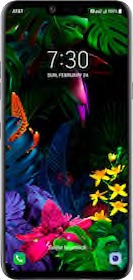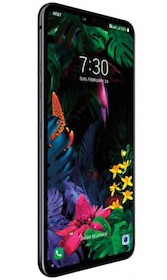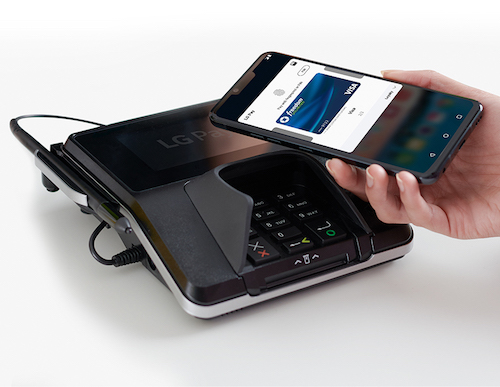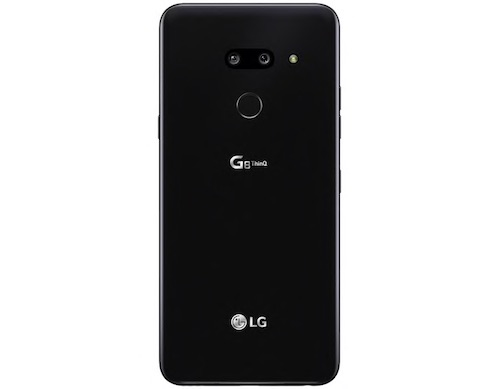
LG G8 ThinQ Android Smartphone Screams on AT&T’s 5Ge Network
AT&T is currently upgrading its network to 5G, only a handful of 5G smartphones are currently available. Until Qualcomm produces more 5G modems, Huawei releases their handsets, and smartphone makers release fully 5G standardized phones, AT&T’s 5Ge wireless protocol, which is a combination of tightly grouped and upgraded antennas, faster fiber optic back haul, and software to support everything, is next in the US. While Samsung’s S10 5G, Note 10 Plus 5G, and Motorola’s Z series with a 5G add-on are available, they only support one standard of 5G. Enter the LG G8 ThinQ Android 9 smartphone.
LG G8 ThinQ Unboxing by Chris @24k
Disclosure: The LG G8 ThinQ & AT&T Wireless services were on loan at no cost. I have not been compensated for this review. All thoughts and opinions are my own. Some photos may be courtesy of AT&T or LG.
The most exciting feature of the G8 ThinQ is its super fast 5Ge wireless speeds. You will see what I mean in some of my blazingly quick Instagram posts. Worried that super fast speeds will not be available in your area? This upgraded form of 4G LTE is still rolling out across the country. Though, I have been seeing areas upgraded in less than a month. Interestingly, Downtown San Francisco has not yet been upgraded, when I checked early in August, but the large city should get it in the near future.
Powering the LG smartphone’s smarts is Qualcomm Snapdragon 855 CPU, fast charging QuickCharge 3.0 technology, along with wireless charging. They use the same CPU as the newly released Samsung Note 10 series of smartphones. This handset charges with an 18W wall adapter and a USB-C cable. Most companies have removed the 3.5mm headphone jack, though LG’s is still available at the bottom, with some tech for audiophiles. Qualcomm’s QuickCharge 3.0 is mostly standard across Android phones.
Overview
LG’s G8 ThinQ comes with the Android Pie 9.0 system, UX 8.0 and Google’s security patch from June 2019. Their UX 8 menu organization reminds me of Android 7. The app drawer behaves differently than stock Android 9. The company has typically been slow to release system and security updates. It is best to let the phone automatically check for them.
During testing, it did receive security patches. It has over 6GB of RAM, which means that LG could update the Android OS to Q. In fact, Google says that the LG G8 ThinQ is compatible with Android Q Beta 3. Expect the Android Q update to roll out for this phone in 2020.
What’s In The Box:
– LG G8 ThinQ Smartphone
– Nano SIM Card (AT&T)
– 3,500 mAh (non-removable) Battery
– Wall Charger / USB-C Data Cable
– Quick Start Guide
Apple provides several years of system and security updates to iPhone and iPad owners. LG would do well to follow suit. One of the reasons for the slow updates is that they have to work with multiple carriers. LG and AT&T release updates at a middle rate between the top four carriers in the US. I do hope LG considers shortening their update schedule for system and security updates. Flagship smartphones are now a strong blend of software and hardware.

LG G8 ThinQ ATT Smartphone Left Side
The G8’s left side is where the Google Assistant button is located. The volume buttons are on the left too, opposite of the power button. Because the assistant button is not conveniently located where you would hold the phone when turning it on, I accidentally activated it almost every time. I had to deactivate it.
Those with a pair of wired headphones can plug in on the bottom left 3.5mm jack, which includes a Hi-Fi Quad DAC. This DAC supports DTS:X 3D, which means you get audio that sounds more spatial with a compatible set of headphones. Audiophiles should enjoy the quality of sound coming from the Quad DAC and Crystal Clear Screen. Sound and bass, both clear and loud, come from both the screen and the back of the smartphone. I enjoyed that when I sat the phone down on a hard surface, sound emanated from it too.
Beyond its top-of-the-line Qualcomm SnapDragon 855 CPU (2.84GHz x 1, 2.42GHz x 3, 1.79GHz x 4) and OLED screen, LG has packed in hardware and features that go beyond what other Android smartphones offer. Air Motion, Hand ID, and Face ID are all possible because of its Z Camera embedded in the top notch. First generation of technology is almost always a little buggy. Air Motion and Hand ID work, but not as successfully as the fingerprint scanner on the back does. What is interesting is that the Pixel 4 is rumored to have similar hand gesture technology. You can thank LG for pioneering this handy tech.
Air Motion works by first enabling it in the preferences and your hand needs to be a certain distance from the Z Camera. You will not remember how far away your hand needs to be to activate this feature. Instead, you motion towards the camera and then it tells you if your hand is in the right spot. Next, move it closer or further away from the phone. Somewhere between these movements, Air Motion will work. These touchless commands can answer calls, adjust snooze alarms, switch apps, play and pause, and increase volume. Take a look at my videos of how Air Motion works. Hand ID works faster and more often though.
The notch on the LG OLED display has many options for the area on each side. It is nice to be able to change the color of this space and turn it off all together. This will add some obvious headspace to the usable area of the screen. I preferred using the notch of the G8 ThinQ.
LG’s software features should be more intuitive and their UX 8.0 reminds me of Android 7 with all of the nested and tabbed preferences. Hopefully, the upgrade to Android Q and UX 9.0 will be more like a lightly skinned stock Android experience that the majority of us enjoy.
Its squircle (curved) corners, with a small top notch, and edge-to-edge QHD+ Crystal Sound OLED display is pleasing to look at and sounds great at the same time. At 3120 x 1440 resolution including notch, its 564 PPI goes well beyond Apple’s Retina displays. It is no wonder then that LG supplies some of their screens to Apple.
The speaker is attached on the underside of the glass of the phone and vibrates the sound from the front and back of the device. I enjoyed the screen’s super deep blacks, color saturation, and brightness when using it outside in the direct sunlight of Las Vegas. Streaming videos and watching shows with this phone was more impressive than with the ZTE Axon M, which I reviewed last year, link at the end of this review.
A simple yet powerful technology that LG has embedded in their G series of phones, since at least the G5, is the “knock on” for the screen, to turn it on and off. I have found this to be much easier to control than using the power button on the side, where I would accidentally turn on the Google Assistant.
The main reason for this is the G8 ThinQ’s glass screen Crystal Sound speaker technology. AT&T Wireless says this smartphone has, “crystal-clear sound.” I mostly kept the volume on less than half as the audio produced at that level was nice enough in most situations. Turned all of the way up, I could easily hear audio coming from the G8 ThinQ across my living room.
Streaming YouTube videos, Twitch and Mixer channels, and live broadcasts all worked flawlessly in all of the cities I tried them in. San Francisco, California was the only city that I tested these scenarios in, which had low AT&T Wireless signal (two bars max of 4G LTE). I mainly used Wi-Fi in this city to do my streaming tests.
For the several months of AT&T Wireless service that were available to test, in Western US cities, which included Las Vegas, Salt Lake City, Los Angeles, Anaheim and Sacramento, I noticed some of the fastest speeds ever. This is directly due to 5Ge. 5Ge is only available to top-of-the-line AT&T smartphones.
A new cell site was recently installed in a small town outside of Sacramento, which produced speeds upwards of 112Mbps down. This was a nice surprise to me as the last time I tested AT&T’s 4G LTE in this same location I received about 10Mbps down. These speed tests were completed with speedtest.net.
I noticed speeds of 212Mbps down and 45Mbps up in Las Vegas. With 5Ge so fast, I liked that the hotspot function was enabled and I used it frequently. With multiple devices connected simultaneously, the speed still felt like using a home Internet connection.
AT&T Shape 2019 Conference
To experience what AT&T Wireless is doing next with 5Ge and 5G, I visited the AT&T Shape Conference 2019, which they describe as the intersection of technology and entertainment. It was a few months ago, located inside of the Warner Bros. Studios in Los Angeles, California. Technology forward Companies like Tactic Studio, Ericsson, NETGEAR, RED HYDROGEN, HTC VIVE, Magic Leap, DirecTV, Intel, BMW, Warner Bros., Samsung, and LG were sponsors there.
Samsung was showing off their S10 Plus 5G smartphone with a 5G connection specifically setup for the event. People testing the limited 5G services experienced between 1.1Gbps to almost 2Gbps down. That is as lightning fast as a fiber wired connection. NETGEAR was showcasing their newest Wi-Fi 6 routers such as the Nighthawk AX12. Intel and BMW are working together on a connected car platform. Magic Leap had their incredible augmented reality glasses for demo. Ericsson setup their antennas and networking hardware to power the 5G signals around Warner Bros. Studios. Tactic Studio’s live augmented reality apps were some of my favorite AR demos during the conference.
LG presented their G8 ThinQ, which was perfect for me so that I could ask them questions about the smartphone I was reviewing. They explained how Air Motion worked and other key features of the Android smartphone flagship device.

From the AT&T Shape 2019 Conference, I realized that because the Samsung line of phones has Samsung Pay, LG must have a similar on-phone technology. Indeed they do and it is called LG Pay. It is a digital wallet that lets you access your credit or debit, loyalty, and gift cards. The LG Pay app works securely almost anywhere, at both magstripe and NFC payment terminals.
Under the glass, the G8 ThinQ comes with an octa-core Snapdragon 855 CPU running at 2.84GHz, 6GB of RAM, and 128GB of storage. For less than $900, this is definitely an LG flagship phone. Running Android 9 Pie was pleasant and smooth, even when using Chrome to stream broadcasts and playing games like PUBG: Mobile, at the top graphics settings.
It scans for Bluetooth and Wi-Fi signals, even when the phone is in airplane mode. I found that the Bluetooth mode to have randomly turned on. This can be helpful and not so much at the same time.
Flush with the back of this smartphone are its dual cameras, flash and fingerprint sensor. LG included dual rear cameras, however they removed the third rear camera that comes with the international version of the same phone. Maybe they included the third rear camera on the upcoming LG V50 and needed additional hardware to get you to spend a few hundred more for it. The phone is covered in late model Gorilla Glass 5 and Gorilla Glass 6 to support NFC and wireless charging. However, it does not support reverse wireless charging like Huawei’s Mate 20 Pro or the Samsung Note 10 Plus. Reverse wireless charging is convenient to power up wireless earbuds and smartwatches.
There are many smartphones, including premium models, that do not have an auto (HDR mode, like the Huawei Mate 10 Pro. The G8 ThinQ has auto HDR, scene detection A.I., Panorama, 360 Panorama, Cine Video, YouTube Live, and a manual mode (shutter speed, white balance, ISO, exposure, contrast, and more) when snapping photos. Going professional is easy by being able to save photos as RAW in the DNG format. Its most notable video settings include 4k 60FPS, 4K 30FPS, 1080p HD at 30fps, and slow motion. A HDR10 video, steady record, point zoom, Cine Effect, and video portrait are other video modes. Switching between photo and video modes is as easy as a tap.
An 8MP forward facing selfie camera is complemented with a Z camera. There is no forward facing flash because other interesting technology is built into the notch. Hand ID and Air Motion are interesting uses for the Z Camera. It can scan the veins in the hand and ID you. The front-facing camera has story shot, makeup pro, auto shot, gesture shot, gesture interval shot, gesture view, selfie light, and beauty shot. The gesture shot and gesture interval shot snaps a photo with a hand movement, like making a fist twice to take four selfies in a row. The selfie light mode adjusts the screen’s brightness to help light you up.
To store everything, there is 128GB of onboard memory. This may seem like a lot for a flagship smartphone, though there is 103GB leftover from what the system and apps take up. I like SanDisk’s A1 128GB microSD card to record 1080p video and run apps. The microSD card slot can accept cards up to 2TB in size.
One of the best features of Android phones is the microSD card slot, like what the LG G8 ThinQ has. This makes it easy to expand storage to store 4K UHD videos, photos and extra large downloaded files.

It comes with an IP68 dust and water resistance rating and was MIL-STD-810G tested. lt endures drops in pools and sinks. Because there is so much processing happening inside of the phone, it uses an internal heat pipe to move heat away from the octa-core CPU. Its size is 5.98” height by 2.83” width by .33” deep, and it weighs 5.89 oz. This water resistance rating was somewhat surprising since it has a headphone jack, multiple microphones, a USB-C port, and a small opening for sound on the side.
LG’s G8 ThinQ is a completely smooth glass Android Pie smartphone from AT&T Wireless. I tried using it without a case for a while and it would sometimes slip off of hard surfaces like my nightstand and tables. I suggest getting a thin silicone case and a 9H glass screen cover for it. It is a flagship phone with a price that reflects that. However, it is now under what the Samsung S10 and others that are similar cost. I used it around the Western US as a hotspot and because it connected at 5Ge, it felt faster than when I have used my Verizon 4G LTE Wi-Fi portable hotspot. Its photo capabilities are impressive, but the QHD+ OLED screen is such a fantastic feature. If Apple were to build an iPhone SE2, this is the design they should use, it is that good.
The last AT&T smartphone that I reviewed was the ZTE Axon M and while this LG G8 ThinQ is fundamentally different with a single screen, you get a screamingly fast wireless 5Ge capable handset with futuristic features.
Rating: 4.5/5
Pros:
– 6.1” QHD+ Crystal Sound OLED Screen
– 3,500 mAh Battery
– 12MP & 16MP Super Wide-Angle Cameras
– 8MP & Z Front Facing Cameras
– 6GB RAM
– 4G LTE AT&T Wireless with 5Ge
– SIM and microSD Combo Tray
– 2.84GHz Octa-core CPU
– IP68 Resistance Rating
– QC 3.0 Charging & Wireless Charging
Cons:
– Non Removable Battery
– It Is All Glass
– Air Motion Needs Work
– UX 8.0 Could be More Intuitive